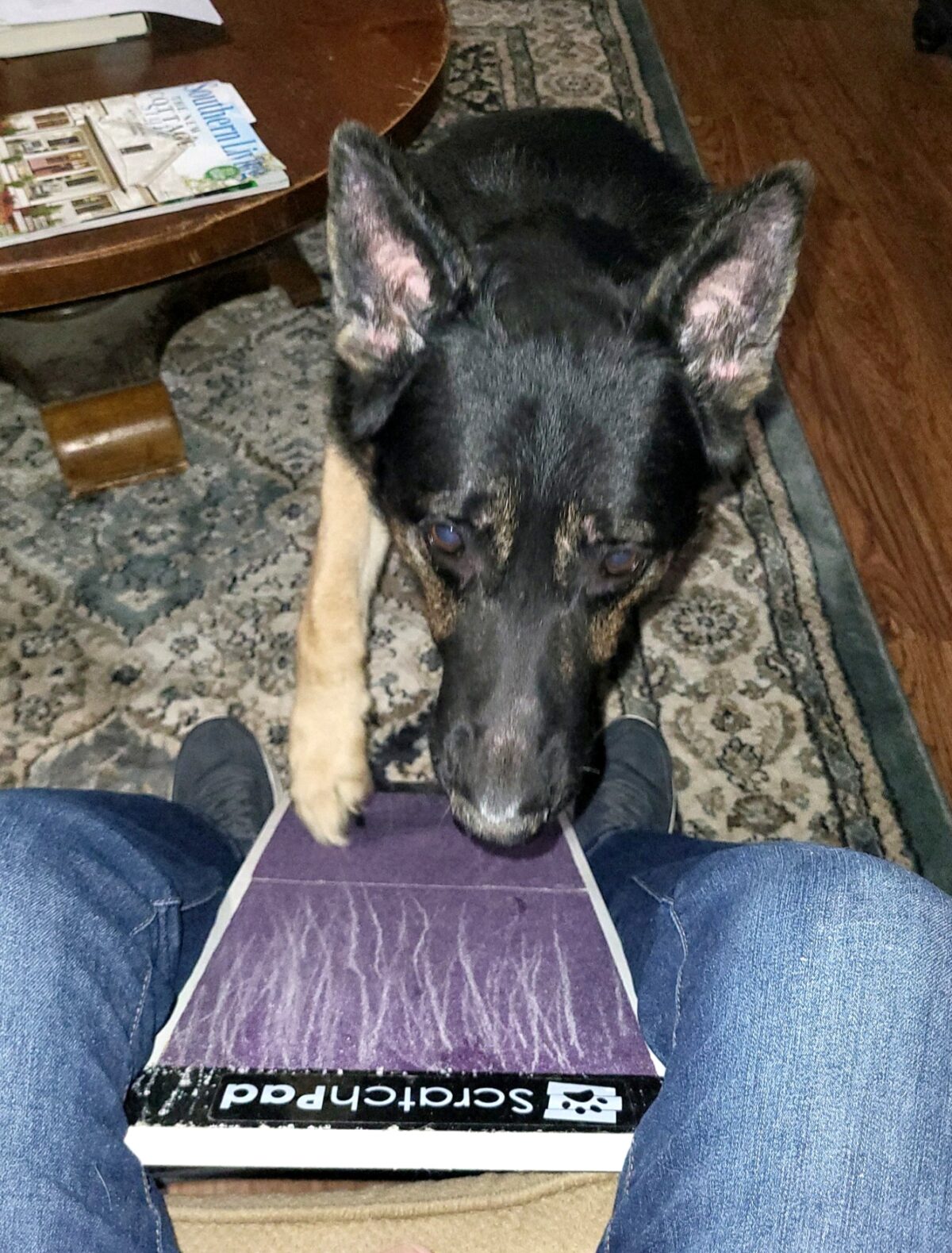My first dog as an adult was a Shetland Sheepdog named Sundance. I was determined to do everything right with Sundance, without the dependable net of my parents, who had done all the work with our dogs when I was growing up. I was going to love her, train her, and take care of her. I was committed to daily brushing and determined to cut her nails myself.
My veterinarian showed me how to cut the nail properly, and everything went great for about a year. One day, I was trimming Sundance’s nail and she jerked at the last moment. My hand slipped and I nicked the quick. She yipped as blood squirted, seemingly everywhere. She was the one bleeding, but I burst into tears. “I’m so sorry!” I cried. She tilted her pretty head at me, dashed away, and brought me her tennis ball. She was fine. I was a wreck. It took me a while to recover and get the nerve to trim nails again. Today I’m a pro, but I remember that trepidation.
Are you worried about trimming your dog’s nails? The task can be daunting! If handling clippers or a Dremel makes you nervous, consider using a scratch board.
Sandpaper to the Rescue
A scratch board is basically a wooden or plastic board, covered in medium or coarse sandpaper. You can purchase one already made or put one together yourself. You teach your dog to paw at the sandpaper, which will file his nails down. Your dog does most of the work himself! No clippers involved.
Don’t worry about your dog scratching his paw pads – most dogs naturally flex their nails outward when they scrape their paws against something. They’ll protect their paw pads. The scratch board is more effective for front paws than back paws, although it is possible to also teach dogs to use their back feet. Back paw nails, however, are usually shorter in general, so you may not need to worry about them.
Training Your Dog to Paw the Board
What you’ll need: a washcloth or hand towel, treats, and a scratch board.
Start without the board. Show your dog a treat, put it on the ground, then put the cloth on top of it. He is likely to nose the cloth aside to get the treats. At first, mark (with a clicker or verbal marker, such as “yes”) either nose or paw behavior, just before he eats the uncovered treat. Most dogs will progress from nose to paws. Start marking only paw behavior, just before he uncovers and eats the treat. Repeat until he is using his paws consistently to move the cloth aside to get the treats.
When he’s using his paws regularly, add the scratch board to the routine. With your dog in front of you, place the scratch board on the ground in between you. Each of you should be at a short end of the rectangular board. Show your dog the treat and drape the cloth over the top part of the board. Encourage him to reach across the board towards you and paw the cloth away to get the treat. Mark and treat when he does so successfully.
Gradually shorten the cloth so it barely covers the treat. We’re now gradually removing the cloth from the picture. Continue to mark and treat paw use. When your dog reliably paws at the board without the cloth, it’s time to start gradually raising your end of it. You can prop it on your leg or something sturdy, gradually raising it until it’s at a 45-degree angle.
In time, you may notice uneven shortening of the nails, depending on how your dog paws the board. You can adjust the filing by slightly angling the board to the left or the right, to get all parts of the nails.
Be patient and make all your sessions fun and short. Using Fear Free training techniques will make this a fun game for your dog, so he won’t be stressed about his pedicures!
This article was reviewed/edited by board-certified veterinary behaviorist Dr. Kenneth Martin and/or veterinary technician specialist in behavior Debbie Martin, LVT.
Teoti Anderson, CPDT-KA, KPA-CTP, is the vice president of A Dog’s Best Friend, located in Ft. Lauderdale, Florida. A professional dog trainer for more than 23 years, she is the author of The Dog Behavior Problem Solver, Dog Fancy Ultimate Guide to Dog Training, Animal Planet Dogs 101 Dog Training, Puppy Care and Training, The Super Simple Guide to Housetraining, Quick & Easy Crate Training, and Your Outta Control Puppy. A popular conference speaker, she has given presentations to pet owners, humane organizations, and fellow trainers across the United States and internationally.
Want to stay in the loop on the latest and greatest in keeping your pet happy and healthy? Sign up for our free newsletter by clicking here!








